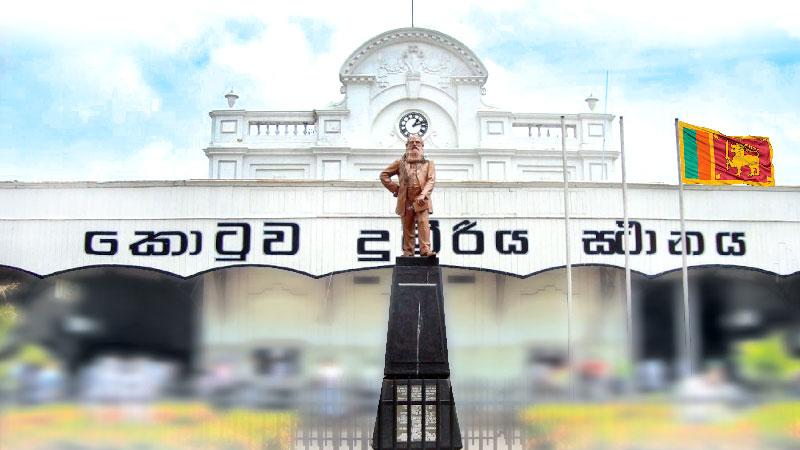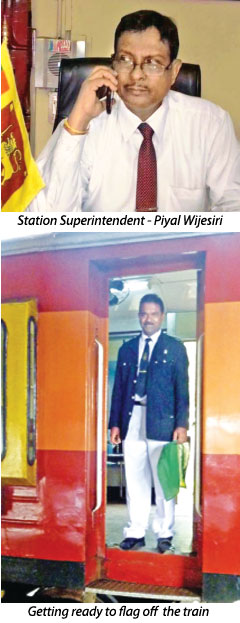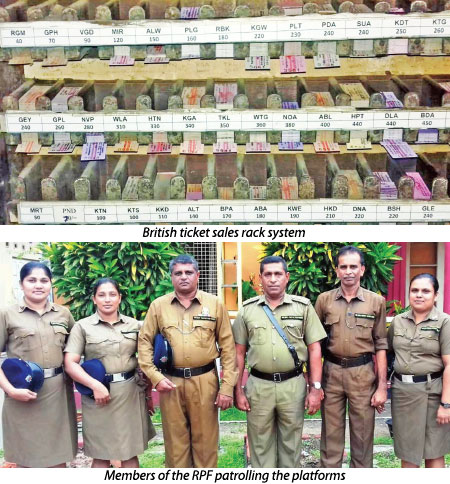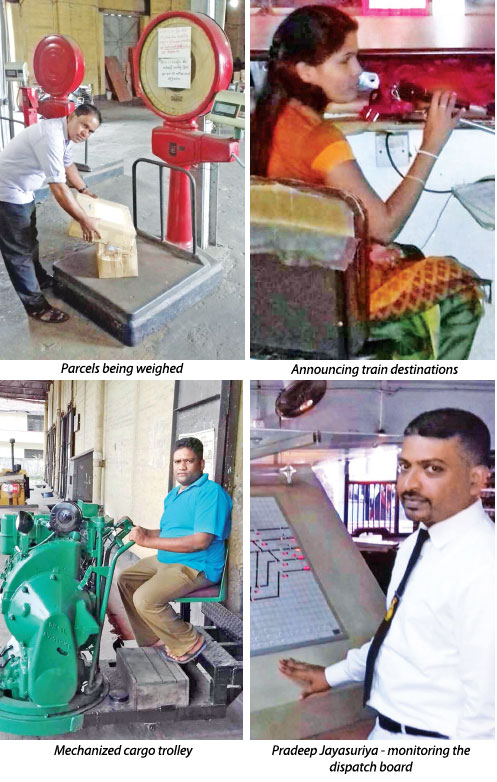
 With almost 300,000 passengers coming to Colombo daily, in 275 trains, the Fort Railway Station is undoubtedly the heart of the railway service. It continues to be a busy hub connecting Colombo with the rest of the island. Since 1917, this station has steadily progressed to rise to its present status. When train services were introduced in Ceylon, a small station called Fort was built in 1877 where the present Secretariat Train Station stands (near Lake House). Subsequently, the new Fort Station was built to resemble the Manchester Victoria Station, in England. Prior to this, the Maradana Railway Station was the hub of train transport.
With almost 300,000 passengers coming to Colombo daily, in 275 trains, the Fort Railway Station is undoubtedly the heart of the railway service. It continues to be a busy hub connecting Colombo with the rest of the island. Since 1917, this station has steadily progressed to rise to its present status. When train services were introduced in Ceylon, a small station called Fort was built in 1877 where the present Secretariat Train Station stands (near Lake House). Subsequently, the new Fort Station was built to resemble the Manchester Victoria Station, in England. Prior to this, the Maradana Railway Station was the hub of train transport.
I visited the Fort Railway Station and met the man in charge of its entire operation, Station Superintendent Piyal Wijesiri, attired in full white, maintaining the British uniform dress code. His cozy office still has furniture of a century ago. Superintendent Wijesiri explained, “Fort is probably the busiest station in the country. We operate trains from 11 platforms, with 275 trains coming in from every part of the country. At one time, there were 200,000 people taking our trains and now the number is almost 300,000. Along with me there are another 58 Station Masters who work to ensure a good train service. We have other branches such as Seat Reservations, Train Operations, Parcel Branch and Accounts. In addition we have the Coast Line and Main Line branches. Our teams work 24 hours a day. At present, we have around 250 staff at this station”.
Running all these trains to meet the scheduled time is a daunting task. The key responsibility falls on the Operations Branch. Pradeep Jayasuriya was the officer on duty as we walked into this branch. An illuminated white board with red and orange lights showed the 11 platforms at Fort. Jayasuriya explained: “We have three Station Masters on duty. It is our task to ensure that all trains run according to the time table. We are in touch with the Main Control Room at our Headquarters located at Maradana, where the journey of every single train is plotted and monitored. The train announcements are also made at our branch. Now and then there are a few delays but we always try to maintain the scheduled time. We realize that time is important to people, especially, those going to work and returning home after work’.
The Fort Station has 22 ticket counters. An officer elaborated on the ticket operations at these counters saying, ‘These ticket dispensing racks are antique. They are 100 years old, and still serve their original purpose of holding tickets for sale. The tickets are coded in colours to indicate different lines. On an average we earn an income of almost Rs 4 lakhs per day. In addition, we have a Reservations Office for the night mail trains, and for issuing of tickets against the Railway Warrant, for government staff’.

The wooden ticket rack has the train stations on a particular line, with the corresponding tickets. An experienced staff can sell six tickets per minute and even faster when crowds increase.
From here we walked towards the Parcel Branch, along the platform. A group of foreigners are eagerly awaiting a train. The platforms are busy, with passengers boarding the train. When the Head Guard waves his green flag the Engine driver toots the horn twice and the train pulls out of the station.
Parcel warehouse
The Parcel warehouse is loaded with cardboard boxes and bags. Clerks are busy marking the goods to their assigned destination. Others are busy weighing the boxes on vintage scales, which have now been modified with digital weight displays. Decades ago the trains were the only source of transferring goods across the island. In the good old days, people even sent cattle and ponies in the wooden goods wagons, which are now not in service. The Parcel Branch has a set of mechanized trolleys, custom built to run on the platforms. These old units are still in operation and ferry goods from the warehouse to the train.
With so many folk coming in and out of the Fort Station, security is a vital part of the railway operation. Superintendent of Railway Protection Force (RPF) Anura Premeratne said: “The Fort Station is a very busy place. We have our officers patrolling the platforms on three shifts to cover 24 hours. In addition, we deploy our staff in civil clothes to detect pickpockets and other undesirable characters.”
“At times we come across intoxicated passengers, who disturb others. We are empowered to arrest anyone in the station premises and hand them over to the Fort Police Station. Our staff also take note of those travelling without a valid ticket. The fine for this offence is 3,000 rupees.”
The railway security also has female staff members who work alongside their male colleagues. Railway Guards clad in white uniform with black coats are seen boarding the trains.
The Head Guard is assisted by an Under Guard on every single train. Their main branch is located at the Maradana Station. In addition to these branches there are clerks, ticket checkers, catering staff, maintenance crews and janitors who help to run this mega operation. The Fort Station is the source of life to many vendors who operate outside the station along Olcott Mawatha, Malwatte Road and part of Bodhiraja Mawatha. For years these vendors and their families have depended on the passengers who frequent the Fort Station.
These vendors sell fruits, biscuits, gram, peanuts, soft drinks and bottled water. Some others sell caps and sunglasses. A few eating outlets also cater to passengers travelling long distances. These traders said their peak business was on days prior to long weekends when thousands of city dwellers go to their home towns. There are lottery ticket sellers who walk the platforms enticing the commuters to try their luck. In addition, there are taxi (three wheel) drivers who also depend on the passengers coming out of the Fort Station, taking them to destinations in and around Colombo.
For 100 years the Fort Railway Station has connected millions of Sri Lankans, and is a living legend of the British railway systems.
